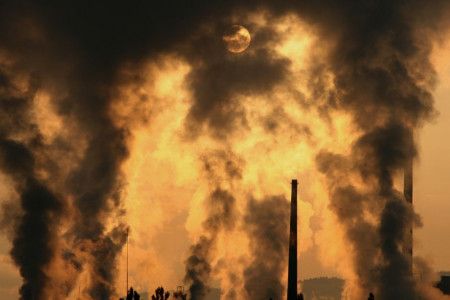Bankwatch Network, 10.12.2019.
Kostolac B is the largest sulfur dioxide pollutant (SO2) in the region, despite the construction of a desulphurisation plant, according to a new study released today by CEE Bankwatch.
The report is available HERE.
Total sulfur dioxide emissions from coal-fired power plants in Serbia, Kosovo, Bosnia and Herzegovina and Northern Macedonia were as much as six times higher in 2018 than allowed in the National Emission Reduction Plans (1) submitted by the Energy Community Secretariat. In Serbia, SO2 emissions were 6.16 times higher than the national emission limit.
Individualy, thermal power plants with the largest pollutant is Kostolac B, whose SO2 emissions were as much as 14 times more (113,913 tonnes) than allowed in the National Plan for the plant. In second place is thermal power plant Nikola Tesla B, which emitted 89,045 tonnes of SO2.
The Kostolac B thermal power plant itself emitted more sulfur dioxide than allowed for the entire region, despite it being the only thermal power plant in the region to have a new desulphurisation plant - allegedly commissioned as early as July 2017. CMEC (China Machinery and Engineering Corporation), which has installed the plant, is currently building a new Kostolac B3 block.
All Western Balkan countries are members of the Energy Community, and have therefore been obliged to reduce pollution from thermal power plants by 2018 in accordance with the Large Combustion Plants Directive. However, none of the countries that compiled the National Emission Reduction Plan complied with their total national emission limit values for 2018.
"It remains unclear what went wrong with the investment in the desalination for Kostolac B, but the situation needs to be addressed urgently," emphasized Kalmar Zvezdan of the Center for Ecology and Sustainable Development (CEKOR), "How is it possible for the same company to build a new Kostolac B3 block while the desulphurisation plant it has already built at the same site has not been operational for more than 2 years after completion of the works? ”
"Serbia can not continue this way. Investments in pollution reduction are urgently needed, but at the same time, Serbia must invest heavily in energy efficiency to reduce energy consumption and create the possibility of shutting down old coal-fired power plants, which are the biggest air pollutants, ”added Kalmar.
“Energy Community countries have had 12 years to comply with the limit values set out in the Directive on Large Combustion Plants, making it unacceptable for any condemnation that the authorities in the region have neglected this problem. Considering the health damage that air pollution causes, investing in reducing emissions or shutting down a power plant is not only a matter of legal but also a moral obligation, ”concludes Ioana Ciuta, Energy Coordinator at CEE Bankwatch and one of the report's authors.
Contacts:
Kalmar Zvezdan, Center for Ecology and Sustainable Development, +381655523191, vodana@gmail.com
Ognjan Pantic, Belgrade Open School, +381616201276, ognjan.pantic@bos.rs
Pippa Gallop, CEE Bankwatch Network, +385997559787, pippa.gallop@bankwatch.org
Photo source: canva.com
(1) The National Emissions Reduction Plan (NERP) is one of the mechanisms for achieving the objectives of the Large Combustion Plants Directive, which Serbia has decided to bring its emissions from large combustion plants into line with the Directive.

